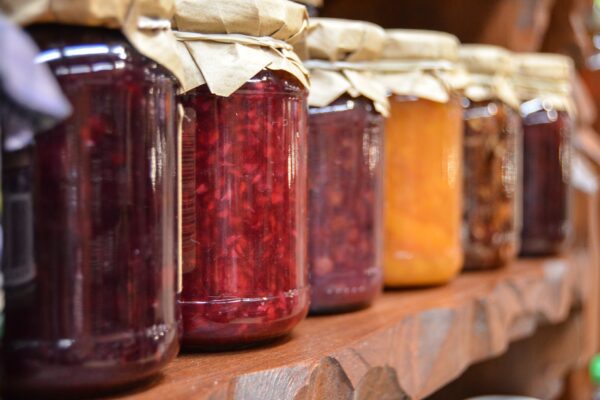
In all aspects of our lives, we have an opportunity to make sustainable choices. All areas in which we consume – travel, fashion, beauty, work, everything at home from laundry to cleaning – has an impact. Food makes up a large proportion of what we consume daily, and therefore our food choices are a major component of a sustainable lifestyle.
Sustainable eating encompasses not only what we eat, but also from where and how it’s grown. Our food choices have a significant impact, not only on the environment but also on our health and economic well-being. By becoming more conscious about the choices we make regarding food, we are then able to make incremental changes to our daily eating habits. These adjustments, though small, can have both positive and lasting effects. Here are a few tips to start eating sustainably today.
- Be mindful of the food you consume.
Making responsible food choices starts with being knowledgeable about where your food comes from, how it’s grown, and of course, what’s in it. These are important questions to ask, be it at the supermarket, health food store, online, or even at a restaurant. The answers allow you to make more informed decisions. So do your research, ask questions, and learn!
2. Eat what’s in season locally.
Seasonal food is likely grown or produced locally and is, therefore, fresher, and more nutritious. It has not travelled overseas or been kept in storage extensively. Thus, eating seasonally not only provides a more nutritious diet but with less transportation and storage, it can be cheaper than alternatives and is most certainly, better for the environment.
In the Caribbean, we have several locally produced carbs that can be swapped out for imported rice and pasta. They can also be healthier alternatives. Celebrate locally grown produce like green banana, breadfruit, and dasheen, by incorporating them more into your daily cuisine.

3 . Grow what you eat.

When you grow what you eat, you make healthier food choices. A home garden gives you easy access to healthy and affordable food. Unlike most of the produce found at supermarkets, the ones you grow will be freshly picked and likely more nutritious. You also get to control the amount and type of fertilizers and pesticides that go into your food.
Having my own kitchen garden has actually reduced my weekly shopping bill (I’ll share more on my herb garden in a future blog post). And now that I can pick just what I need for each meal, I don’t have a bunch of herbs that are spoilt and have to be thrown out EVERY week.
4. Plan your meals

Planning your meals for the week is a great way to save money and reduce waste at home. With a menu in mind, it’s easier to make a grocery list that aligns with what you need to prepare those meals. No more wandering at the grocery store and being side-tracked by “sales” or items you don’t need. This can save you a lot of time and money. Meal planning is also healthier than not planning – planning ahead allows you to consider portion size, preferences, and nutrition.
5. Store food properly.
Proper storage techniques can make your food last longer while preserving its nutritive value. According to Healthline, fresh fruit and vegetables should not be washed before storage in the fridge. The added moisture can significantly reduce their lifespan. Also note that dairy should not be stored in the refrigerator door, due to the inconsistent temperature from constantly opening and closing. To keep dairy from spoiling, place it on the middle or bottom shelves near the back, where the temperature is more consistent.
(Let me know if you would like more food storage tips?)
6. Preserve Foods.
Food preservation has been around for centuries as a means of avoiding food waste. Fresh fruits and vegetables are highly perishable and consequently, make up a significant portion of spoilt or wasted foods. Freezing, drying, pickling, and canning are some methods that can be used to extend the life of your food. Overripe fruit can be made into jams and sauces; mature vegetables are optimal for pickling, but can also be used in broths and stews. I usually freeze my overripe fruit and turn them into delicious smoothies later on.
Bonus tip: Use moldy or decaying produce as compost.
7. Reduce food packaging

Food packaging can have a significant impact on sustainability. The packaging is a major contributor to the waste piled up in landfills, and much of it can be avoided depending on the choices we make. Where possible, shop for package-free or plastic-free goods. Grains, pasta, and other dried foods (such as beans and peas) are often sold in bulk and can be a great way to minimize packaging. Forgoing prepackaged produce for loose ones also creates an opportunity to reduce packaging. Additionally, opting for loose produce also ensures that you purchase just the amount you need (and no more), thereby reducing food waste and providing opportunities for savings.
In what ways are you choosing to eat sustainably? Which tip will you try first? Let me know!





I’ve always wanted a home garden so I think I’ll try that one first! And yes, I would like some more tips on sustainable eating 😁
Awesome!
Very good tips Desiree. Especially about being mindful of what foods we can consume. Little things like reading the nutrition labels and ingredients can also help us to control our health and live more sustainable lives. Would love to have my own garden one day but don’t have a green thumb for those things so maybe I can start with a small herb garden…hmmm that’s a thought! We love to learn more food storage tips.
Awesome!
Totally agree, especially with consuming seasonal foods, it’s also a way of supporting local vendors n helping the economy.
So true Britney!